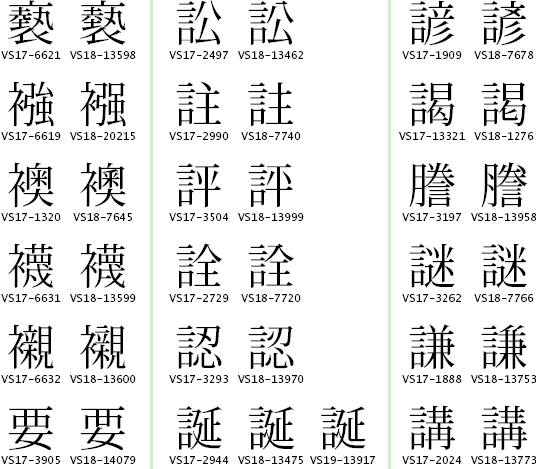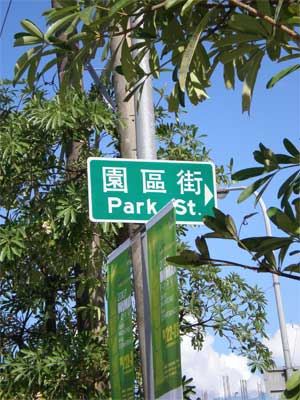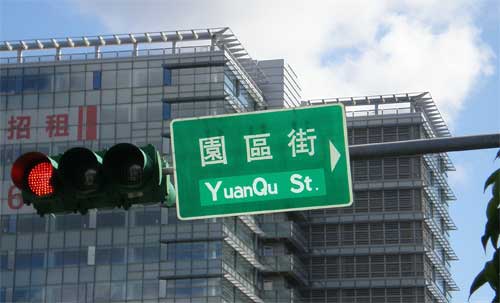Many Web sites in China are running the story that Chinese, Japanese, Korean, and Taiwanese scholars have reached an agreement on unification of Chinese characters — and that this involves using many traditional characters.
If any “agreement” has indeed been reached, it probably won’t mean much, if anything at all — certainly not to the government of China. But the number of sites running this story and the prominence of some of the members of the PRC delegation make me wonder if this might just be a little more than much ado about nothing.
Zhōng xīn wǎng 11 yuè 5 rì diàn jù hǎiwài méitǐ pīlù, shǔyú Hànzì wénhuà quān de Zhōngguó, Rìběn, Hánguó Sānguó hé Zhōngguó Táiwān dìqū de xuézhě juédìng zhìzuò tǒngyī zìxíng (wénzì de xíngzhuàng) de 5000-6000 ge chángyòng Hànzì biāozhǔn zì.
Hánguó “Cháoxiǎn rìbào” kānzǎi wénzì jí shìpín bàodào chēng, dì-bā jiè “guójì Hànzì yántǎohuì” shàngzhōu zài Zhōngguó Běijīng chuánméi dàxué lóngzhòng zhàokāi, huìyì yóu Zhōngguó Jiàoyùbù yǔyán wénzì yìngyòng yánjiūsuǒ hé guójiā Hànyǔ guójì tuīguǎng lǐngdǎo xiǎozǔ bàngōngshì zhǔbàn. Huìyì jìhuà jiāng Yuènán, Mǎláixīyà, Xīnjiāpō, Xiāng Gǎng, Àomén xīshōu wéi xīn huìyuán, kuòdà Hànzì shǐyòng guójiā huò dìqū de cānyù fànwéi. Huìyì juédìng zhìzuò gè guójiā dìqū Hànzì “bǐjiào yánjiū cídiǎn”, zhújiàn tǒngyī gèguó shǐyòng de zìxíng. Huìyì hái jiù míngnián zài shǒu ěr jǔxíng dì jiǔ jiè yántǎohuì, gèguó fēnbié shèzhì 3 míng liánluòyuán (yánjiū fùzérén) dáchéng le xiéyì.
Jù bàodào, “guójì Hànzì yántǎohuì” yú 1991 nián fāqǐ. Qí mùdìzàiyú, yùfáng Dōngyà guójiā yīnwèi shǐyòng Zhōngguó Táiwān de fántǐzì, Zhōngguó de jiǎntǐzì, Rìběn de lüèzì děng bùtóng xíngzhuàng de Hànzì chǎnshēng hùnluàn, quèdìng chángyòng Hànzì de zìshù, tuījìn zìxíng biāozhǔnhuà (tǒngyī).
Běnjiè huìyì yǔ 2003 nián zài Rìběn Dōngjīng jǔxíng de dì-qī jiè yántǎohuì xiānggé 4 nián. Jù bàodào, běn cì huìyì tíyì, 5000 duō ge chángyòng biāozhǔn zì jiāng yǐ “fántǐzì” wéizhǔ jìnxíng tǒngyī, rúguǒ gèbié Hànzì yǒu jiǎntǐzì, jiù jìxù bǎoliú.
Chūxí cǐcì huìyì de Zhōngfāng dàibiǎo yǒu Wáng Tiěkūn (Jiàoyùbù yǔyán wénzì xìnxī guǎnlǐ sī fù sīzhǎng, Zhōngguó Wénzì Xuéhuì fùhuìzhǎng jiān mìshūzhǎng), Huáng Dékuān (Ānhuī Dàxué xiàozhǎng, Zhōngguó Wénzì Xuéhuì huìzhǎng), Sū Péichéng (Běijīng Dàxué jiàoshòu), Lǐ Dàsuì (Běijīng Dàxué jiàoshòu); Hánguó fāng dàibiǎo yǒu Lǐ Dàchún (Guójì Hànzì Zhènxīng Xiéhuì huìzhǎng), Lǐ Yīngbǎi (Shǒu’ěr Dàxué míngyù jiàoshòu), Jiāng Xìnhàng (Chéngjūnguǎn Dàxué míngyù jiàoshòu), Chén Tàixià (Rénjǐ Dàxué shǒuxí jiàoshòu), Jīn Yànzhōng (Gāolí Dàxué jiàoshòu); Rìběn fāng dàibiǎo yǒu Zuǒténg Gòngyuè (Zhùbō Dàxué jiàoshòu), Qīngyuán Chúnpíng (qīnshàn bù huìzhǎng); Zhōngguó Táiwān dìqū [sic] dàibiǎo yǒu Xǔ Xuérén (“Zhōngguó Wénzì Xiéhuì” lǐshìzhǎng).
source: Zhōngguo, Rìběn, Hánguó yǔ Zhōngguó Táiwān dìqū xuéjiè jiù “tǒngyī Hànzì” dáchéng xiéyì (中日韩与中国台湾地区学界就“统一汉字”达成协议), November 5, 2007



 Ah, Park Street: Taipei’s lovely tree-lined boulevard next to a wonderful oasis of well-manicured nature.
Ah, Park Street: Taipei’s lovely tree-lined boulevard next to a wonderful oasis of well-manicured nature. 